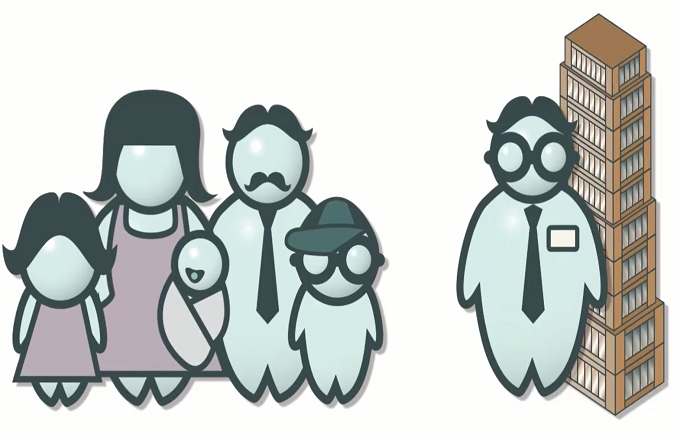So an example of a call choice for Apple stock would look something like this: APPL 01/15/2018 200 Call @ 3. Still, depending upon what platform you are trading on, the option trade will look extremely different. There are various methods you can utilize http://zanderhbpq427.almoheet-travel.com/how-many-months-can-you-finance-a-used-car-questions when options trading - all of which differ on threat, benefit and other aspects.
With straddles (long in this example), you as a trader are expecting the property (like a stock) to be extremely unstable, but don't understand the instructions in which it will go (up or down). When using a straddle method, you as the trader are purchasing a call and put alternative at the exact same strike rate, underlying price and expiration date.
For example, when a business like Apple () - Get Report is getting ready to launch their third-quarter earnings on July 31st, an options trader could utilize a straddle method to buy a call option to end on that date at the present Apple stock rate, and likewise buy a put alternative to end on the exact same day for the very same cost.
Investors who utilize this method are assuming the underlying property (like a stock) will have a remarkable rate motion however do not understand in which direction. What makes a long strangle a rather safe trade is that the financier just requires the stock to move higher than the overall premium paid, but it does not matter in which direction.

The Ultimate Guide To Which Of These Methods Has The Highest Finance Charge
If you have long possession financial investments (like stocks for example), a covered call is a fantastic choice for you. This method is typically great for financiers who are just neutral or a little bullish on a stock. A covered call works by purchasing 100 shares of routine stock and offering one call alternative per 100 shares of that stock.
Covered calls can make you money when the stock price boosts or stays quite constant over the time of the option contract. Nevertheless, you could lose cash with this sort of trade if the stock rate falls excessive (but can actually still earn money if it only falls a little bit).
With this technique, the trader's danger can either be conservative or risky depending upon their choice (which is a definite plus). For iron condors, the position of the trade is non-directional, which means the asset (like a stock) can either go up or down - so, there is revenue potential for a relatively vast array.
These calls and puts are brief. When the stock price stays between the 2 puts or calls, you make an earnings (so, when the price changes somewhat, you're generating income). But the strategy loses money when the stock cost either increases significantly above or drops drastically below the spreads. For this reason, the iron condor is considered a market neutral position.
What Does Aum Mean In Finance for Dummies
However, as a fundamental concept of what a typical call or put option would be, let's think about a trader buying a call and put option on Microsoft () - Get Report. For example, if you purchased a long call alternative (remember, a call alternative is an agreement that offers you the right to purchase shares later on) for 100 shares of Microsoft stock at $110 per share for December 1, you would deserve to buy 100 shares of that stock at $110 per share regardless of if the stock rate changed or not by December 1.
However, if you decide not to work out that right to purchase the shares, you would just be losing the premium you spent for the alternative because you aren't obligated to purchase any shares. If you were buying a long put choice for Microsoft, you would be betting that the cost of Microsoft shares would decrease up until your agreement expires, so that, if you chose to exercise your right to offer those shares, you 'd be selling them at a higher rate than their market worth.
You buy an option for 100 shares of Oracle () - Get Report for a strike price of $40 per timeshare for rent by owner share which expires in two months, expecting the stock to go to $50 by that time. You've spent $200 on the contract (the $2 premium times 100 shares for the agreement).
At this moment, you can exercise your call choice and purchase the stock at $40 per share instead of the $50 it is now worth - making your $200 initial contract now worth $1,000 - which is an $800 revenue and a 400% return. There are a lot of mistakes even seasoned traders can make when trading choices.
Some Ideas on What Are The Two Ways Government Can Finance A Budget Deficit? You Should Know
If your option's underlying stock goes way up overnight (doubling your call or put option's worth), you can work out the agreement instantly to enjoy the gains (even if you have, state, 29 days left for the choice). Another typical error for alternatives traders (particularly novices) is to fail to develop a great exit prepare for your option.
Still, other traders can make the error of thinking that less expensive is much better. For choices, this isn't always real. The cheaper an option's premium is, the more "out of the cash" the option usually is, which can be a riskier investment with less earnings potential if it goes wrong. Buying "out of the cash" call or put alternatives indicates you desire the hidden security to dramatically alter in value, which isn't always foreseeable.
A call option is a contract that permits you to purchase some assets at a repaired rate called the strike price. In the case of a stock option, the call manages 100 shares of stock until it expires. To perform a call, you first should own one. The purchase price of a call is called the premium.
Upon execution, the option disappears from your account, your cash balance is minimized by an amount of money equal to 100 times the strike price timeshare sales jobs and 100 shares of the underlying stock are deposited into your account. Action 1Compare the alternative strike price to the existing stock rate. For instance, you have a get in touch with XYZ stock with a strike price of $44 a share.
All about What Is An Option In Finance
If the share price is below the strike rate, say at $43, the call is "out-of-the-money." If the strike price is listed below the stock price, the call is "in-the-money'" Note that you originally paid a $100 premium to purchase the call. Step 2Trade an out-of-the-money call. You would NOT wish to execute the call, as this would cost you 100 times the $44 strike, or $4,400.
You do this by getting in a BUY order for $100 shares of XYZ on your brokerage screen. You would then sell the call at its present premium to make back some or all of your initial premium. You do this by going into an OFFER TO CLOSE order for the call on you brokerage screen.

Let's assume the current cost of XYZ is $46 a share. Furthermore, assume that the call's premium has actually increased to $250 (how did the reconstruction finance corporation (rfc) help jump-start the economy?). Your first option is to execute the call at the strike cost, costing you $4,400. This would leave you with a paper revenue of $200, because the shares are now worth $4,600.